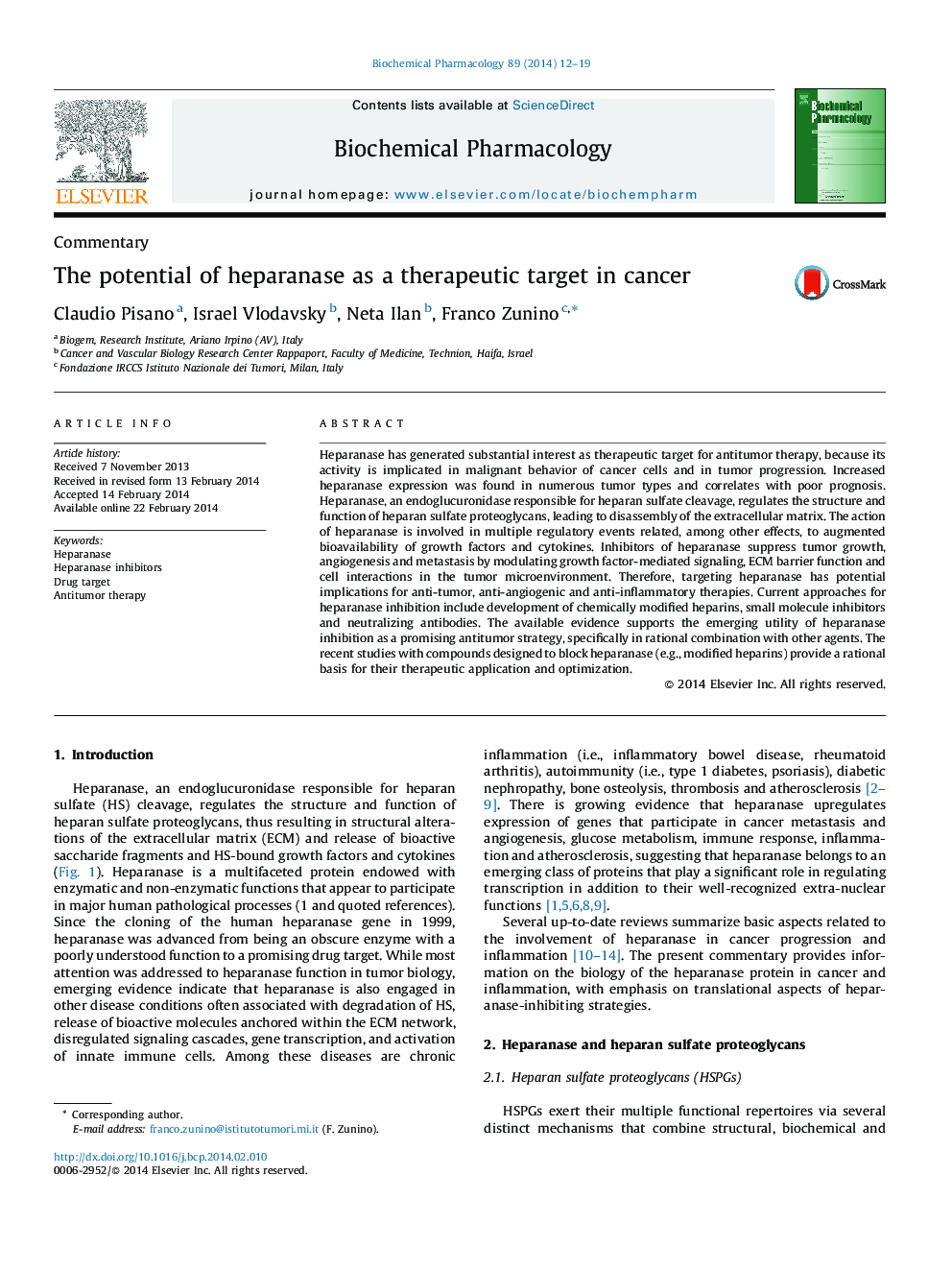| کد مقاله | کد نشریه | سال انتشار | مقاله انگلیسی | نسخه تمام متن |
|---|---|---|---|---|
| 2512311 | 1118337 | 2014 | 8 صفحه PDF | دانلود رایگان |
Heparanase has generated substantial interest as therapeutic target for antitumor therapy, because its activity is implicated in malignant behavior of cancer cells and in tumor progression. Increased heparanase expression was found in numerous tumor types and correlates with poor prognosis. Heparanase, an endoglucuronidase responsible for heparan sulfate cleavage, regulates the structure and function of heparan sulfate proteoglycans, leading to disassembly of the extracellular matrix. The action of heparanase is involved in multiple regulatory events related, among other effects, to augmented bioavailability of growth factors and cytokines. Inhibitors of heparanase suppress tumor growth, angiogenesis and metastasis by modulating growth factor-mediated signaling, ECM barrier function and cell interactions in the tumor microenvironment. Therefore, targeting heparanase has potential implications for anti-tumor, anti-angiogenic and anti-inflammatory therapies. Current approaches for heparanase inhibition include development of chemically modified heparins, small molecule inhibitors and neutralizing antibodies. The available evidence supports the emerging utility of heparanase inhibition as a promising antitumor strategy, specifically in rational combination with other agents. The recent studies with compounds designed to block heparanase (e.g., modified heparins) provide a rational basis for their therapeutic application and optimization.
Figure optionsDownload as PowerPoint slide
Journal: Biochemical Pharmacology - Volume 89, Issue 1, 1 May 2014, Pages 12–19
